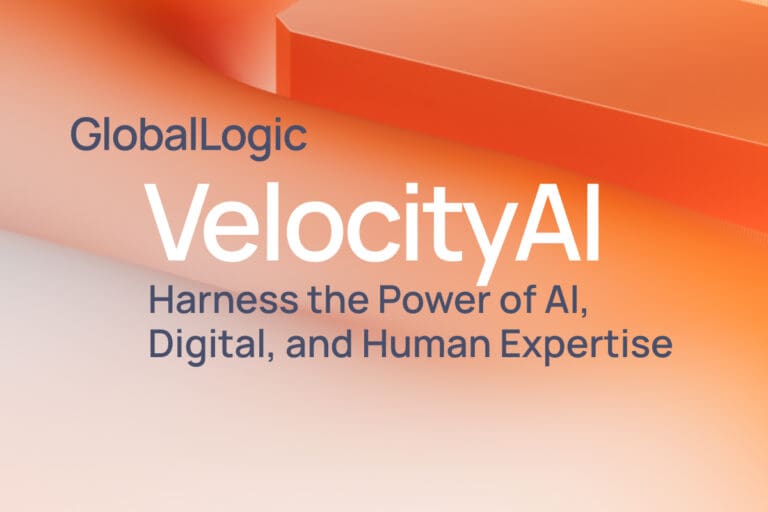- Services
Technology Capabilities
Technology Capabilities- Product Strategy & Experience DesignDefine software-driven value chains, create purposeful interactions, and develop new segments and offerings.
- Digital Business TransformationAdvance your digital transformation journey.
- Intelligence EngineeringLeverage data and AI to transform products, operations, and outcomes.
- Software Product EngineeringCreate high-value products faster with AI-powered and human-driven engineering.
- Technology ModernizationTackle technology modernization with approaches that reduce risk and maximize impact.
- Embedded Engineering & IT/OT TransformationDevelop embedded software and hardware. Build IoT and IT/OT solutions.
- Industries
- GlobalLogic VelocityAI
- Insights
BlogsDecember 16, 2024Gene LeybzonAccelerating Digital Transformation with Structured AI Outputs
This code produces the following output that can be imported into the candidate trackin...
 BlogsOctober 30, 2024Yuriy Yuzifovich
BlogsOctober 30, 2024Yuriy YuzifovichAccelerating Enterprise Value with AI
Discover how financial services integrations are transforming from standalone offerings...

- About Us
Press ReleaseGlobalLogicMarch 11, 2025GlobalLogic Launches VelocityAI to Harness the Power of AI, ...
VelocityAI combines advanced AI technologies with human expertise, helping businesses r...
 Press ReleaseGlobalLogicJanuary 10, 2025
Press ReleaseGlobalLogicJanuary 10, 2025GlobalLogic Announces Leadership Change: Srini Shankar Appointed ...
SANTA CLARA, Calif.–January 10, 2025– GlobalLogic Inc., a Hitachi Group Com...

- Careers
Published on June 21, 2022Evolution of Data & Analytics Technologies (Part -2)
View all articlesArun ViswanathanPrincipal Architect, TechnologyShareRelated Content Sanjeev Azad17 April 2025
Sanjeev Azad17 April 2025 GlobalLogic10 April 2025View All Insights
GlobalLogic10 April 2025View All Insights Natasha Haksar9 April 2025
Natasha Haksar9 April 2025Let's start engineering impact together
GlobalLogic provides unique experience and expertise at the intersection of data, design, and engineering.
Get in touchAnalyticsData EngineeringCross-IndustryIn part 1 of this blog series, we looked at the data and analytics evolution across data platforms, data processing technologies, and data architecture. Here in part 2, we’ll take a look at the evolution of the data and analytics space across application development and storage aspects.Data Application Development Evolution
Programming based → Scripting → SQL like → Low/No Code UI Initially, data engineers used programming languages like Java to develop most of the data applications on initial big data ecosystem projects like Apache Hadoop. This was because these frameworks provided interfaces to create and deploy data applications using the Java or Scala programming language.
Soon after, data engineers and analysts could easily use custom scripting languages like Apache Pig for Hadoop or Scalding for Cascading to develop jobs in a more user-friendly way without writing programs in the underlying language.
Due to the widespread use of SQL amongst the data analyst and data scientist communities, SQL and SQL-like frameworks such as Apache Hive for Hadoop, CQL for Cassandra, and Apache Phoenix for HBase became prominent and continue to be widely used by data engineers and data analysts alike.
Currently, with a shortage of data engineers and analysts, enterprises are increasingly looking at user interface based development that can reduce the implementation complexity and improve productivity. Therefore, the trend for the future is to move towards low code or no-code user interface based applications like AWS Glue, Azure Data Factory, Prophecy.ai, and GlobalLogic Data Platform that minimizes the learning curve for data engineers and accelerates the development for enterprises.

Data Formats Evolution
Text / Binary Formats → Custom Formats → Columnar Formats → In Memory Columnar & High Performance Formats In the beginning, analysts stored most of the data in the Hadoop Distributed File System (HDFS) as text files or in binary formats like SequenceFile or RCFile. While some formats like text and JSON are readable to the bare eye, they consume a lot of storage space and are not performance friendly for large volumes of data.
Subsequently, engineers developed many open-source data serialization formats like Apache Avro and Google Protobuf to serialize structured data. They provide rich data structures and a compact, fast binary data. These formats continue to be used frequently for storing data.
Then engineers developed columnar formats like Apache ORC, Apache Parquet, Delta, and Apache Hudi that support better data compression and schema evolution handling. The columnar formats like ORC, Delta, and Hudi can also support ACID transactions to handle data updates and change streams.
The columnar data formats and storage systems are already the most used across enterprises. The trend for the future will be to use in-memory columnar formats like Apache Arrow or high-performance formats like Apache Iceberg or Apache CarbonData that provide efficient data compression and encoding schemes with enhanced performance to handle complex data in bulk. Internally, these formats still use ORC or Parquet to store the data making them compatible with the existing data stored.
Data Storage Evolution
HDFS → Hive → NoSQL / NewSQL → Cloud Data Warehouses + Blob Storage HDFS was the initial distributed file-based storage system that allowed engineers to store large amounts of data on top of community hardware infrastructure. For example, engineers run the MapReduce programs on top of the files stored in HDFS.
Apache Hive and HBase frameworks followed this development, providing a table-like view of the underlying data and allowing developers to run SQL-like queries on the underlying data.
Soon after, several NoSQL databases were developed with different characteristics like wide-column, key-value store, document store, graph database, etc., to support specific use cases. Some popular NoSQL databases include Apache Cassandra, MongoDB, Apache CouchDB, Neo4J, Memcached in open source and Amazon DynamoDB, Azure CosmosDB, and Google Cloud BigTable, among commercial versions.
During this period, engineers introduced an integration of traditional RDBMS with NoSQL as NewSQL that seeks to provide the scalability of NoSQL systems for online transaction processing (OLTP) workloads while maintaining the ACID guarantees. Some NewSQL databases include Amazon Aurora, Google Cloud Spanner, CockroachDB, and Yugabyte DB, among others.
Most of the cloud storage is HDFS-compliant, and together with the serverless nature of this storage, enterprises are increasingly using them as the blob storage systems. Therefore, the trend for the near future will be to use cloud blob storage like Amazon S3, Azure Blob Storage/ ADLS, and Google Cloud Storage as the landing zone for ingesting data. The data will then be processed and aggregated data will be persisted in Cloud data warehouses such as Amazon Redshift, Azure Synapse SQL Data warehouse, Google Cloud BigQuery, Snowflake, or Databricks DeltaLake.
Engineers will continue to use the NoSQL databases for specific data use cases as applicable.
This concludes the second part of this blog series. We’ll continue to explore the evolution of the data and analytics space in subsequent blog posts in this series in the coming months.
